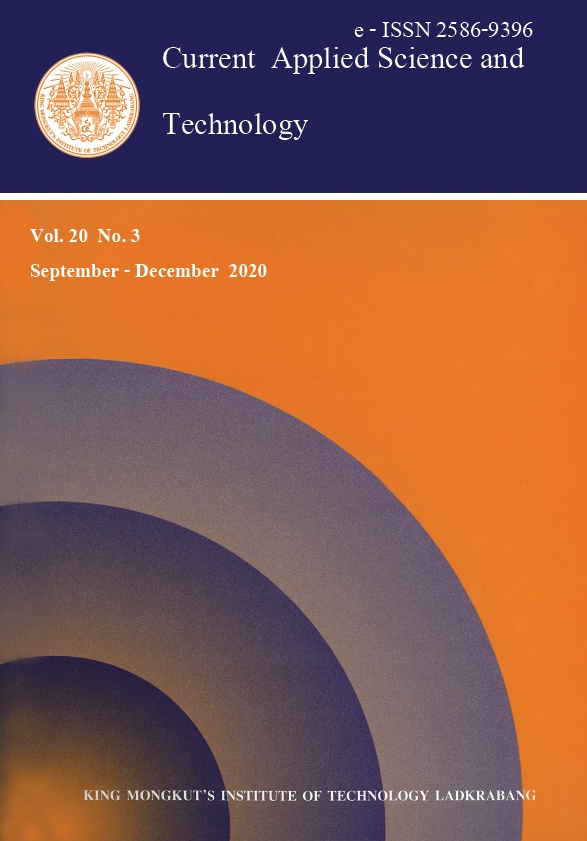Effect of Different Application Methods for Pendimethalin Herbicide on Growth and Productivity of Green Pea Plant (Pisumsativum L.)
Main Article Content
Abstract
The application of the right herbicides and the avoidance of their use at high levels can protect crops from weeds whilst reducing environmental dangers associated with their overuse. Effects of the use of the herbicide pendimethalin, henceforth referred to as PM, on green pea plants at pre-emergence and post-emergence were studied. Different concentrations of the herbicide were applied at 0.0, 1.4, 2.8 and 4.1ml/l, levels which were equal to doses in the field of 0.5, 1, 1.5 l/Donum. Post-emergent plants showed a significant decrease in plant height (cm), pod number/plant, pod weight (g), pod length (cm), fresh weight of plant (g) and weight of 1000 seeds (g). However, the decrease was not significant in the dry weight of plant (g) and the number of seeds/pod. Also, all studied traits decreased significantly when different concentrations of PM overlapped with the application methods, except in the case of the weight of 1000 seeds. These results showed that the effects of PM reps are apparent from low concentrations of the herbicide, and also that treatment at post-emergence reduces environmental pollution and protects the crop, and especially the parts of the plants that are consumed, from pesticide pollution.
Keywords: chemical pollution; pendimethalin; pea, pre-emergence; productivity
*Corresponding author: Tel: (+964) 7724555215
E-mail: Nahlahammok@yahoo.com
Article Details
Copyright Transfer Statement
The copyright of this article is transferred to Current Applied Science and Technology journal with effect if and when the article is accepted for publication. The copyright transfer covers the exclusive right to reproduce and distribute the article, including reprints, translations, photographic reproductions, electronic form (offline, online) or any other reproductions of similar nature.
The author warrants that this contribution is original and that he/she has full power to make this grant. The author signs for and accepts responsibility for releasing this material on behalf of any and all co-authors.
Here is the link for download: Copyright transfer form.pdf
References
Aboulila, A.A., Belal, E.B., Metwaly, M.M. and El-Ramady, H.R., 2016. Degenotoxicity of pendimethalin contaminated clay soil by Pseudomonas resinovorans using anatomical, cytogenetic and biochemical analysis in Vicia faba plants. International Journal of Current Research in Biosciences and Plant Biology, 3(2), 38-53.
Ansari, S.M., Saquib, Q., Attia, S.M., Abdel-Salam, E.M., Alwathnani, H.A., Faisal, M., Alatar, A.A., Al-Khedhairy, A.A. and Musarrat, J., 2018. Pendimethalin induces oxidative stress DNA damage, and mitochondrial dysfunction to trigger apoptosis in human lymphocytes and rat bone-narrow cells. Histochemistry and Cell Biology,149(2), 127-141.
Alshallash, K.S., 2014. Effect of pendimethalin, trifluralin and terbutryn on Lolium multiflorum growing with barley during pre-emergence stage. Annals of Agricultural Science, 59(2), 239-242.
Mohamed, A.A., 2019. Evaluation of the Effectiveness of Some Herbicides in the Growth and Yield of Maize (Zea mays L.) and Associated Weed. Ph.D. Mosul University.
Vighi, M., Matthies, M. and Solomon, K.R., 2017. Critical assessment of pendimethalin in terms of persistence, bioaccumulation, toxicity and potential for long-range transport. Journal of Toxicology and environmental Health, Part B, 20 (1), 1-21.
El-Nady, M.F. and Belal, E.B., 2013. Effect of phytotoxicity of pendimethalin residues and its bioremediation on growth and anatomical characteristics of Cucumis sativus and Echinochloa crus-galli plants. Asian Journal of Crop Science, 5(3), 222-237.
Hanson, B.D. and Thill, D.C., 2001. Effect of imazethapyr and pendimethalin on lentil (Lens culinaris), pea (Pisum sativum) and subsequent winter wheat (Triticum aestivum) crop. Weed Technology,15(1), 190-194.
Samia, M.A.O., 2015. Effect of Oxyfluorfen and Pendimethalin on Germination and Some Carbohydrate Parameters in Gossypium hirsutum L. and Zea mays L. Ph.D. Khartoum University.
Demir, N., Aydin, S. and Bucurgat, U., 2017. Assessment of genotoxic effects of pendimethalin in Chinese hamster over cells by single cell gel electrophoresis (comet) assay. Turkish Journal of Pharmaceutical Sciences,14(2), 185-190.
Rana, S.C., Pandita, V.K., Chhokar, R.S. and Sanjai, S., 2015. Effect of pre and post emergence herbicides on weeds and seed yield of garden pea. Legume Research, 38 (4), 484-487.
Dawod, K.M. and Zaki, A., 1990. Statistical Procedures for Agricultural Research. Mosul: Mosul University Press.
Wagner, G. and Nadasy, E., 2006. Effect of pre- emergence herbicides on growth parameters of green pea. Communication in Agricultural Applied Biological Sciences, 71(3PtA), 809-813.
Hammok, N.S., 2019. The response of two variety of Faba bean (at flowering stage) to different concentration of alpha cypermethrin insecticide. Mesopotamia Journal of Agriculture, 47(1), 70-79.
Duncan, D.B., 1955. Multiple range and multiple F-test. Biometrics, 11, 1-42.
Antar, S.H., 2010. Statistical Analysis in Scientific Researches and (SAS) Program. Mosul: Ibn Al Atheer Press House for Printing and Publishing.
Singh, N. and Srivastava, A., 2014. Biomonitoring of genotoxic effect of glyphosate and pendimethalin in Vigna mungo populations. Cytologia, 79(2), 173-180.
Karaye, I.U., Aliero, A.A. and Adili, I.S., 2014. Effects of butachlor and pendimethalin herbicides on seed germination and early seedling growth of species of cowpea. Annals of Biological Sciences, 2(4), 11-15.
Verma, S. and Srivastava, A., 2018. Morphotoxicity and cytogenotoxicity of pendimethalin in the test plant Allium cepa L.-A biomarker based study. Chemosphere, 206, 248-254.
Silva, N., Mendes-Bonato, A.B., Sales, J.G.C. and Pagliarini, M.S., 2011. Meiotic behavior and pollen viability in Moringa oleifera (Moringaceae) cultivated in Brazil. Genetics and Molecular Research, 10(3), 1728-1732.
Shabana, E.F., Battah, M.G., Kobbia, I.A. and Eladel, H.M., 2001. Effect of pendimethalin on growth and photosynthetic activity of Protosiphon botryoides in different nutrient states. Ecotoxicology and Environmental Safety, 49(2), 106-110.


